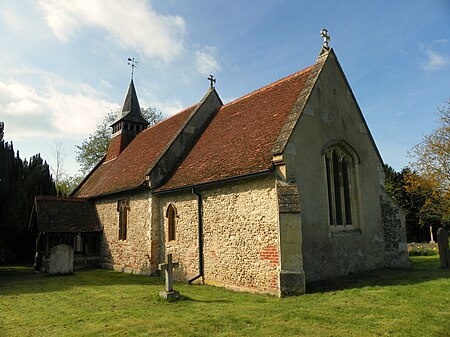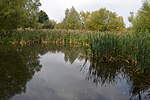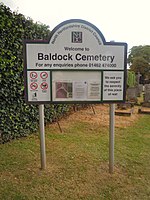Radwell, Hertfordshire
Civil parishes in HertfordshireHertfordshire geography stubsVillages in Hertfordshire

Radwell is a village and civil parish in Hertfordshire, England. It is situated close to the A1 a little to the north of Baldock and Letchworth Garden City and is in the district of North Hertfordshire. The small 14th-century Church of All Saints is in the center of the village. The actor Nigel Hawthorne and his long-time partner Trevor Bentham lived in the village for some years until the nearby Baldock Services was built. Fearing the noise levels from the service station would become unacceptable, the couple moved to Thundridge, Hertfordshire.
Excerpt from the Wikipedia article Radwell, Hertfordshire (License: CC BY-SA 3.0, Authors, Images).Radwell, Hertfordshire
Radwell Lane, North Hertfordshire
Geographical coordinates (GPS) Address Nearby Places Show on map
Geographical coordinates (GPS)
| Latitude | Longitude |
|---|---|
| N 52.007 ° | E -0.206 ° |
Address
Radwell Lane
Radwell Lane
SG7 5EW North Hertfordshire
England, United Kingdom
Open on Google Maps










